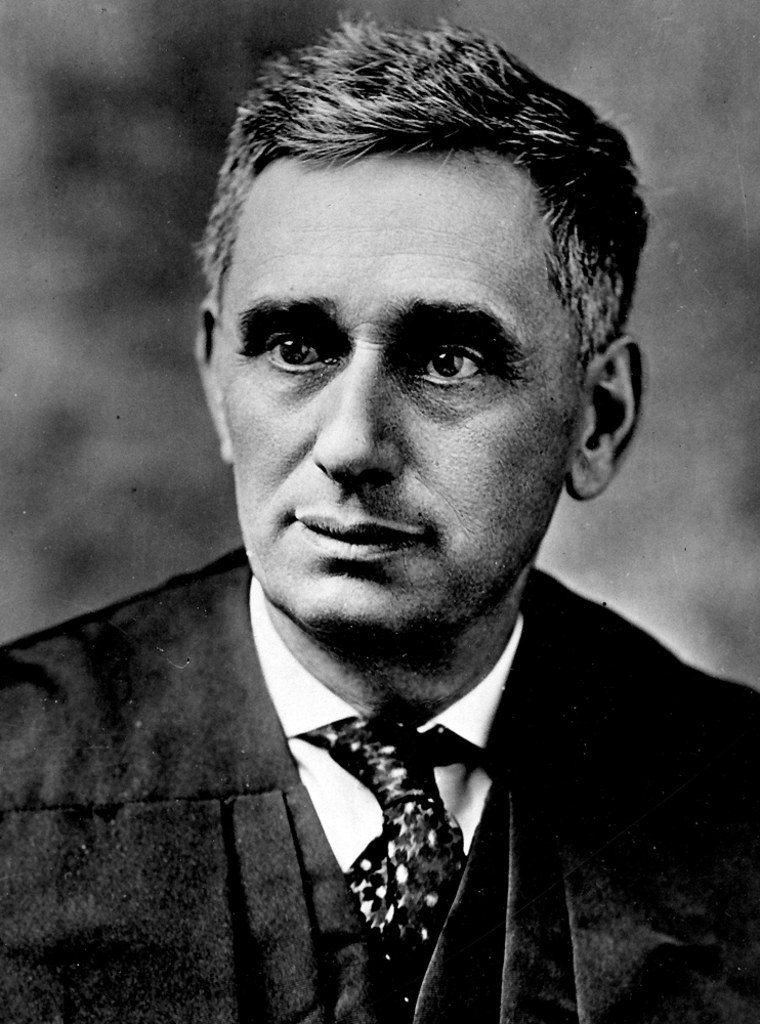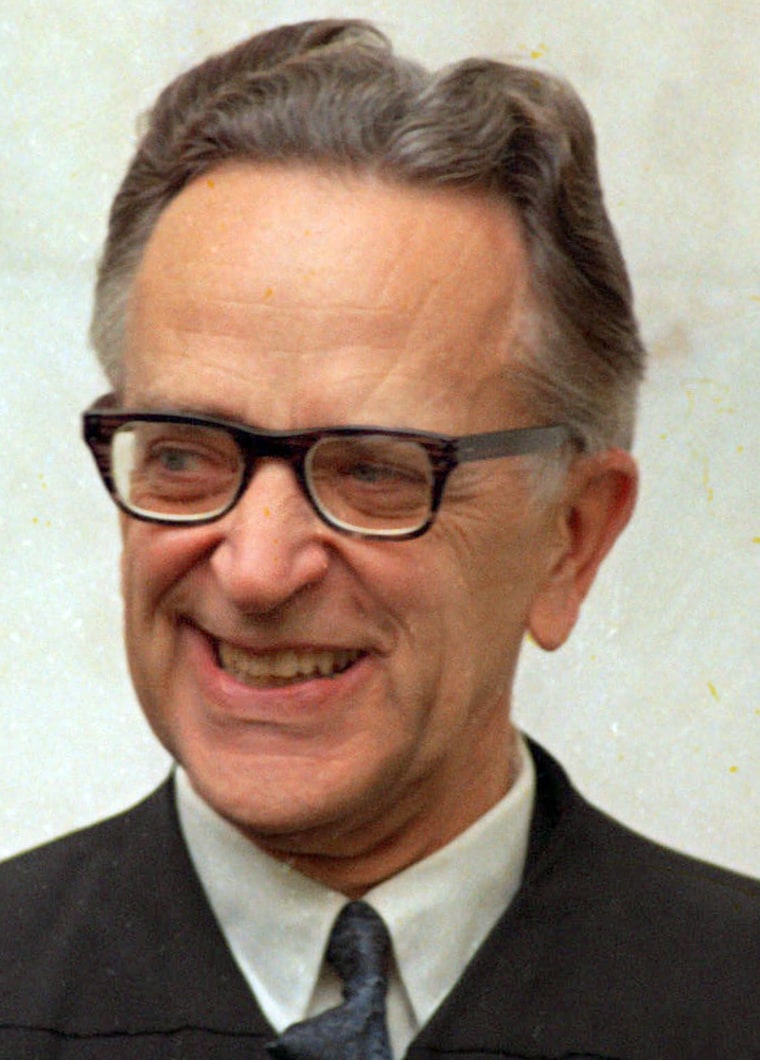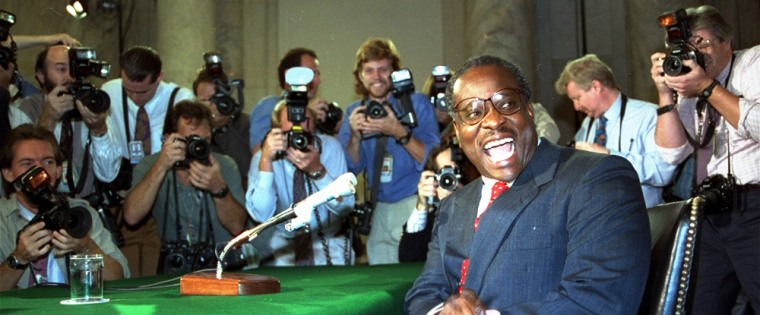Finally after two days, the Supreme Court nominee decided he had taken enough.
Glaring across at his tormentors, the members of the Senate Judiciary Committee, he said, “From my standpoint as a black American, it is a high-tech lynching for uppity blacks who in any way deign to think for themselves, to do for themselves, to have different ideas.”
Accused by Anita Hill, his former subordinate at the Equal Employment Opportunity Commission, of making sexual overtures to her, Judge Clarence Thomas told Judiciary chairman Sen. Joe Biden, D-Del., and his colleagues that their hearing on his nomination to the Supreme Court had become “a circus” designed to bully black conservatives.
Thomas accuses foes of lynching
“Unless you kowtow to an old order, this is what will happen to you…. You will be lynched, destroyed, caricatured by a committee of the U.S. Senate rather than hung from a tree," Thomas declared.
The history of presidents’ battles with senators over nominations to the Supreme Court goes back to 1795, when the Senate rejected George Washington’s nomination of John Rutledge to serve as chief justice.
But never had there been a more dramatic moment than when Thomas thundered at Biden and his colleagues.
Until Hill stepped forward, committee members had wrangled fruitlessly with Thomas over whether he’d ever expressed an opinion on the validity of the court’s 1973 Roe v Wade decision.
The Senate was about to vote. At stake: A Republican opportunity to replace one of the court’s most liberal members, Thurgood Marshall, with an unswerving conservative.
But then Hill agreed to tell the committee her accusations of Thomas musing in her presence about pornographic film star “Long Dong Silver” and other topics.
Despite her charges, the Senate voted to confirm Thomas on Oct. 15, 1991, by a vote of 52 to 48, the closest Supreme Court confirmation vote in 20th century Senate history.
The margin of victory was provided by 11 Southern and Midwestern Democrats, including Sen. John Breaux of Louisiana and Sen. Chuck Robb of Virginia.

None of the other struggles over who would sit on the Supreme Court have involved allegations of sexual pressure, but those fights have sometimes, as in the case of President Lyndon Johnson’s choice of Abe Fortas in 1968, brought to light a nominee’s tragic flaw.
Fortas was oblivious to his conflict of interest in accepting payments from a foundation controlled by indicted financier Louis Wolfson.
Sometimes, as in the cases of Louis Brandeis in 1916 and Robert Bork in 1986, the nomination battle mirrored the ideological struggles of that time.
Referendum on political direction
The Brandeis nomination served as a referendum on the country’s political direction: Should the court serve, as it had for decades, as a bulwark of protection for corporate interests?
Or would the reformist spirit of Democrat Woodrow Wilson, who won the 1912 presidential election, pervade the judiciary as well as the White House and Congress?
Wilson’s nomination of Brandeis on Jan. 28, 1916, electrified Washington. One of the foremost progressives of his day, Brandeis would be the first Jew ever to serve on the high court.
Renowned for his work in cases defending state regulation of hours and conditions of labor, Brandeis had served as one of Wilson’s policy advisers, helping draft landmark legislation such as the Federal Reserve Act.

Urging the Senate to reject the nomination, the New York Times (then a conservative newspaper) wrote that he was “essentially a contender, a striver after change and reforms. The Supreme Court by its very nature is the conservator of our institutions.”
Another Brandeis adversary, Boston lawyer Moorfield Story, called him “ruthless in his attainment of his methods, not scrupulous in the methods he adopts, and not to be trusted.”
During the four-month battle, Wilson won over undecided senators.
According to historian Melvin Urofsky, one key convert was Sen. James O’Gorman, D-N.Y. Wilson won O’Gorman’s gratitude by intervening in the case of Jeremiah Lynch, a naturalized American citizen sentenced to death by a British court for his role in the Irish independence movement.
At O’Gorman’s request, Wilson urged the British government to spare Lynch’s life, and it did.
On June 1, 1916, the Senate voted, 47 to 22, to confirm Brandeis.
While Brandeis was the foremost liberal legal thinker of his day, Bork was the most prominent conservative legal theorist of his.
Kennedy assails ‘Bork’s America’
Bork fell victim to caricaturing by his opponents — “Robert Bork’s America is a land in which women would be forced into back alley abortions, blacks would sit at segregated lunch counters, rogue police could break down citizens’ doors in midnight raids,” declared Sen. Edward Kennedy, D-Mass., as he opened fire on the nominee.
Woefully unprepared by Reagan administration handlers, Bork bombed in his Judiciary Committee hearings.
The Senate scuttled Bork by 58-42 vote.
Reagan’s Bork substitute, federal judge Doug Ginsburg, was forced to withdraw after a farcical episode involving marijuana smoking while he’d served as a law school professor.

Desperate to get someone confirmed, Reagan and his aides turned to a third-string nominee, California federal appeals court judge Anthony Kennedy, a centrist who later often joined the court’s liberal wing and became its foremost exponent of gay rights.
Sometimes Supreme Court nominees fall victim to political revenge.
Liberal Democrats resented the success of conservative Republicans and Southern Democrats in blocking Fortas from becoming chief justice in 1968. The following year the liberals had their chance to settle scores.
Hobbled by charges that he had unethically accepted payments from Wolfson, Fortas resigned in 1969. Nixon selected federal appeals court judge Clement Haynesworth of South Carolina to replace him.
Nixon’s Southern strategy
Nixon had won five Southern states in the 1968 election, regarded Dixie as the future of the Republican Party (as indeed it proved to be) and saw the Haynesworth appointment as integral to his Southern strategy.
But it developed that Haynesworth had ruled in a 1963 case involving Deering Milliken, a firm to which he’d had ties before he became a judge.
On Nov. 21, 1969, the Senate rejected Haynesworth on a 55-45 vote.
Nixon then selected an undistinguished federal appeals court judge from Florida, Harold Carswell. Historian David Yalof says, “He was one of only a handful of candidates in existence who was able to meet each of Nixon’s stringent requirements for nominees. Carswell was young, conservative, a federal judge and from the South.”
Carswell’s foes dredged up a speech he’d given in 1948 in which he had proclaimed his “vigorous belief in the principles of white supremacy.”
The Senate voted him down by a 51-45 vote.
At that point, Nixon wanted to taunt the liberals by nominating the Senate majority whip, Sen. Robert Byrd of West Virginia.

In the Oct. 2, 1971, diary entry of Nixon aide Bob Haldeman, Nixon relished the idea of forcing liberal senators who had defeated Haynesworth and Carswell to vote on Byrd, whom Nixon calls “a former KKK’er … more reactionary than (segregationist George) Wallace.”
After further thought, Nixon opted instead for Minnesota federal judge Harry Blackmun, who won quick confirmation, joined the court’s liberal wing and wrote the majority opinion in Roe v. Wade, the decision legalizing abortion nationwide.
Blackmun and Kennedy — fallback candidates who backfired on those who nominated and supported them — prove that confirmation battles have consequences that last for generations.
